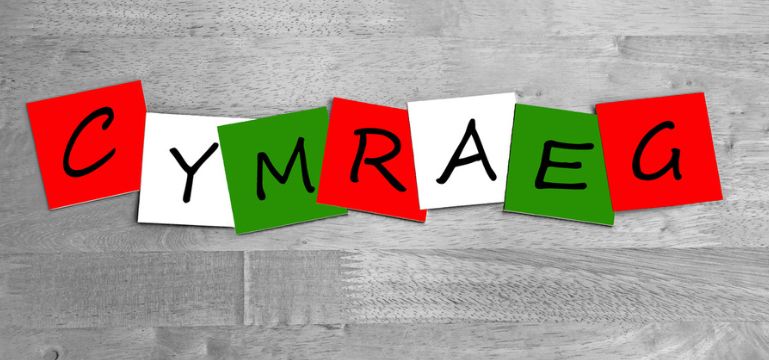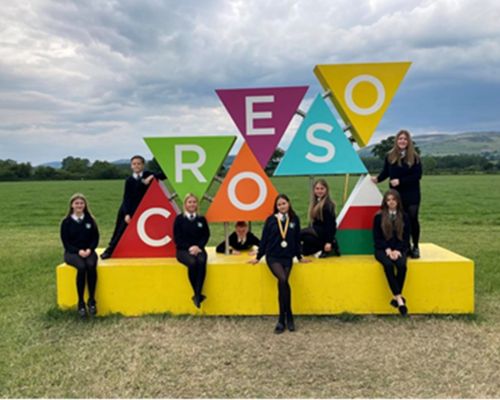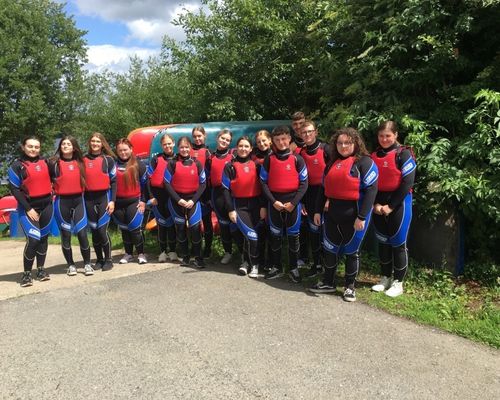Creating a strong culture and appreciation of Welsh language and heritage.

Quick links:
Information about the school
Pen y Dre is an English-medium 11-16 school maintained by Merthyr Tydfil local authority. There are 942 pupils of statutory school age on roll. Around 31% of pupils are eligible for free school meals. The school serves a catchment area consisting of the large Gurnos estate, as well as a number of valley communities on the edge of Bannau Brycheiniog national park. Pupils come mainly from six partner primary schools. Nearly all pupils speak English as their first language and come from a white British background. The number of pupils with special educational needs is 221 (23.5%). The percentage of pupils with English as an additional language (EAL) is 5.8%. There are 23 Children Looked After (CLA) pupils on roll (2.4%). The senior leadership team consists of the headteacher, the deputy headteacher, three assistant headteachers, ALNco, business manager and a senior leader (on secondment).
Context and background to the effective or innovative practice
Pen y Dre High School has developed a strong culture and appreciation of Welsh language and heritage across the school community. The school has worked strategically to develop Welsh as part of everyday school life. This has been achieved through effective teaching and learning strategies to develop pupils’ skills and ensuring a sense of ‘cynefin’ towards the Welsh language and heritage. By skillfully involving the whole community, and in particular parents, the school has fostered an appetite for developing bilingualism for all.
Description of nature of strategy or activity
The school’s approach places Welsh naturally at the heart of school life. The overarching strategy reflects the national mission in making Welsh available for all, focussing on a deep sense of belonging through lifelong use of the language and promoting customs and traditions. Pupil voice is used effectively to develop the use of Welsh, Welsh history and heritage across the whole school community. The ‘Criw Cymraeg’ represents all year groups, backgrounds and abilities and a Welsh society ‘Cymdeithas Cymraeg Pen Y Dre’ has been set up for all staff and ex pupils to support their ‘cynefin’.
Real life contexts are skillfully used. These include:
- Co-ordinating the cluster Eisteddfod, this involves current and past pupils at the school organising and running the day for the primary schools. Pen y Dre pupils can practise their Welsh speaking skills as they lead the day and primary pupils gain valuable opportunities to perform through the medium of Welsh.
- Bi-weekly visits to the school by the local Urdd Officer, working with Year 7 and Year 11 groups. In addition, pupils complete termly projects focused on developing oracy skills with the local Menter Iaith Youth Development Officer and perform in Welsh at multiple locations across the borough on St David’s Day.
- An established Eisteddfod Club with representation from all year groups. The group practise daily and compete in Local Eisteddfods on weekends across South Wales, as well as the annual Urdd National Eisteddfod.

- Enjoying regular visits to important areas from Welsh history such as Senghenydd, Aberfan, Cilmeri, Bannau Brycheininog, Yr Ysgwrn, Eryri and Tryweryn in order to build upon their classroom learning of events associated with these places. The pupils make bilingual information films following the visits and these resources have been shared for use by all schools across Wales.
- Using Welsh as a natural part of the school’s Duke of Edinburgh Award Scheme provision.


- Leading a weekly after school bilingual sports club for Year 4-6 pupils from across the Pen Y Dre partner primary schools, in collaboration with Chwaraeon Yr Urdd.
- Whole school and community celebration of events including Welsh Music Day, St Dwynwen’s Day, St David’s Day, Owain Glyndŵr Day and Diwrnod Shwmae Su’mae.
- Working with key external partners such as the Urdd, Menter Iaith and S4C.
An important aspect of the approach is the close relationship between the Welsh and expressive arts faculties. The expressive arts support pupils in preparing for Eisteddfodau and enabling them to compete in drama, recitation, musical and dance performances along with oracy, literacy, film making and arts and crafts work. Pupils’ enjoy the activities and have gained confidence, they regularly compete in Welsh first language as well as Welsh learner categories.The school creates Welsh-medium films and artwork along with Welsh medium public art exhibitions.
The school works with Welsh Government on strategies to support the 2050 one million Welsh speakers initiative across English medium education. They currently deliver two pilot schemes in collaboration with Welsh Government, the National Centre for Learning Welsh and the Say Something in Welsh company. The aims of both pilots are to change current provision and produce a far greater number of confident post 16 Welsh speakers from English medium settings.
Staff at Pen y Dre High School are happy to use incidental Welsh in their work, and actively seek out opportunities to develop Welsh language communication skills in both formal teaching activities and informal situations. There are weekly key words and phrases in Welsh to develop both pupil and staff competency in the use of Welsh, and several staff are learning Welsh via the ‘Eisiau Dysgu Cymraeg?’ course offered by the school.
What impact has this work had on provision and learners’ standards?
The inclusive learning experiences have provided a strong whole-school community culture of appreciation and pride in the Welsh language and heritage. School staff ensure a daily working environment where the use of Welsh prospers. Pupils react favourably, taking pride in their contribution in building an inclusive bilingual school. This work has also impacted favourably on outcomes within Welsh second language at Key Stage 4, where attainment is consistently higher than modelled expectation and comparable averages.
How have you shared your good practice?
Pen y Dre High School was the first English-medium high school in Wales to be awarded the Siarter Iaith Gold Award, and the school is currently mentoring a number of schools across the central south region and other regions. The faculty leader has acted in an advisory role in collaboration with Swansea, Powys, Carmarthenshire and Gwynedd local authorities and led training for all schools across the Central South Consortium area, sharing good practice and resources.